-
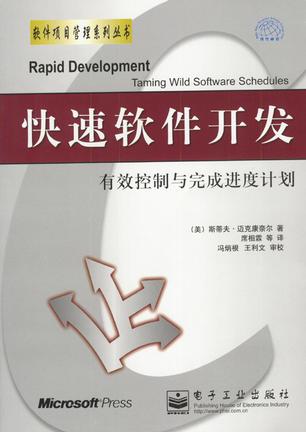
快速软件开发
提高软件开发的速度,按进度计划完成项目,是软件开发项目管理最常见和最难解决的问题。这本书在总结了包括微软公司在内的美国软件业成千上万个软件开发项目的实践经验、研究成果、经验教训的基础上,详细列出了几十种经实践证明可以直接在软件开发中应用,以提高开发速度的最佳实践方法、开发策略、实用技巧等,帮助开发人员和项目经理在了解软件开发中最常见错误的基础上,根据自身实际情况,制定出满足项目进度、成本、质量与其他目标要求的最佳方案。 -

软件开发的科学与艺术
本书凝聚了微软专家多年研究和工作中获得的宝贵经验,是特为每个关注软件开发的人而准备的一本书。书中,这些微软专家现身说法,提供了许多成功亦或失败的案例,并进行深刻中肯的剖析,为读者展现微软企业文化,以及微软的软件开发过程和项目管理等方面的内容。相信这些内容能够带给读者许多思想和观念上的重塑,从而对我们的后继学习和工作产生重要的影响。重要的是通过学习和借鉴软件巨人─微软的成功经验,从而推动中国现代IT企业的发展和进步。 不论是软件开发人员,还是项目管理人员都将从中获益匪浅。本书将是每个从事软件开发的人员案头不可或缺的珍藏书。 -
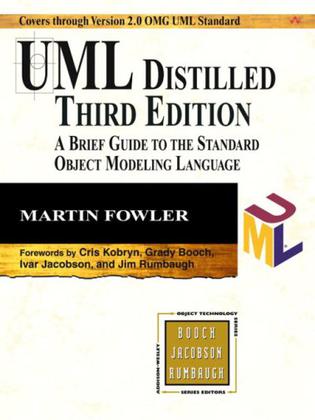
UML Distilled
Pressured with tight deadlines, application developers do not have the luxury of keeping completely up-to-date with all of the latest innovations in software engineering. Once in a great while, a tremendous resource comes along that helps these professionals become more efficient. The first two editions of UML Distilled have been perennial best-sellers because of their concise, yet thorough, nature. This eagerly-anticipated third edition allows you to get acquainted with some of the best thinking about efficient object-oriented software design using the latest version of the industry-standard for modeling software: UML 2.0. The author has retained the book's convenient format that has made it an essential resource for anyone who designs software for a living. The book describes all the major UML 2.0 diagram types, what they are intended to do, and the basic notation involved in creating and deciphering them. A true treasure for the software engineering community. -
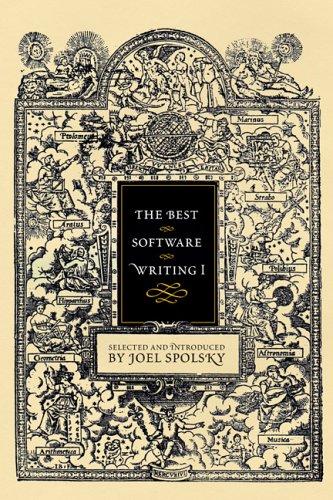
The Best Software Writing I
Frustrated by the lack of well-written essays on software engineering, Joel Spolsky (of www.joelonsoftware.com fame) has put together a collection of his favorite writings on the topic. With a nod to both the serious and funny sides of technical writing, The Best Software Writing I: Selected and Introduced by Joel Spolsky is an entertaining read and a guide to the technical writing literati. The Best Software Writing I contains writings from: * Ken Arnold * Leon Bambrick * Michel Bean * Rory Blyth * Adam Bosworth * danah boyd * Raymond Chen * Kevin Cheng and Tom Chi * Cory Doctorow * ea_spouse * Bruce Eckel * Paul Ford * Paul Graham * John Gruber * Gregor Hohpe * Ron Jeffries * Eric Johnson * Eric Lippert * Michel Lopp * Larry Osterman * Mary Poppendieck * Rick Schaut * Aaron Swartz * Clay Shirky * Eric Sink * why the lucky stiff -
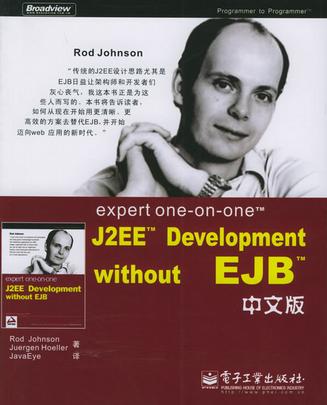
expert one-on-one J2EE Development without EJB 中文版
乍一看这本书的名字,Expert one on one J2EE development without EJB并没有给人带来太冲击。毕竟关于J2EE的书太多了,而without EJB看上去有点象是故意挑衅EJB的感觉。一本J2EE的书怎么可能会给人带来信念或思维的冲击呢?但是它做到了,它不仅使自己变成了不朽的经典,也使Rod Johnson成为了我最近一年的新偶像。 --xiecc 你的J2EE项目是否耗费了你太多的时间?它们是否难以调试?它们是否效率不彰?也许你还在使用传统的J2EE方案,然而这种主案太过复杂,而且并非真正面向对象。这里的很多问题都与EJB有关:EJB是一种复杂的技术,但它没有兑现自己曾经的承诺。 在这本实战手册中,你将看到另一种截然不同的方案:没有EJB,却可以创建质量更高的应用程序,所需的时间和成本则更低。你将学会如何充分利用各种实用的技巧和工具,包括时下流行的Spring框架和Hibernate两个开源工具。你将看到如何高效地解决企业级应用的核心问题,例如事务管理、持久化、远程调用和web设计。你将了解这种新的方案给可测试性、性能和可伸缩性带来怎样的影响,并亲身体验轻量级架构如何大幅降低项目开发所需的时间和工作量。 自从servlet、EJB、JSP等J2EE技术发布之初,本书作者Rod Johnson就一直在使用这些技术,他对于这些技术的优劣利弊了如指掌。现在,通过这本书,你将可以面对面地分享他的专家经验。 你将从本书学到…… 如何针对自己的应用程序找到最简单、最易维护的架构;在不使用EJB的情况下有效地管理事务;如何利用AOP和loC解决企业级软件开发中的常见问题;web层设计,以web层在设计良好的J2EE应用中的地位;J2EE应用中最有效的数据访问技术,包括JDBC、Hibernate和JDO;如何利用开源产品提升生产率、减少编码量;如何从设计层面上改善性能和可伸缩性。 “传统的J2EE设计思路尤其是EJB日益让架构师和开发者们灰心丧气,我这本书正是为这些人而写的。本书将告诉读者,如何从现在开始用更清晰、更高效的方案去替代EJB,并开始迈向web应用的新时代。” 这本书拥有一大堆“看点”。譬如说,它的作者Rod Johnson拥有10年编写Java程序的经验,目前是Servlet和JDO 2.0两个JSR专家组的成员;再譬如说,书中着力介绍的Spring、Hibernate、WebWork等都是时下流行的开源框架,IoC、AOP之类都是时下流行的概念词汇。而最大的看点就赫然摆在这本书的封面上:“without EJB”。我们曾经在无数的书籍和文章中看到,EJB是J2EE的核心技术之一;而Rod Johnson的这本书竟然宣称,绝大多数的J2EE应用根本不需要EJB。这种近乎挑衅的姿态令任何一个负责的J2EE架构师很难不萌生一探究竟的念头——不论你是打算赞同他还是打算驳斥他。 但所有这些尽皆不是本书最大的价值所在。选择一种架构、一种技术的依据是什么?Rod Johnson认为,应该是基于实践的证据、来自历史项目或亲自试验的经验,而不是任何形式的偶像崇拜或者门户之见。书中谈到了企业应用方方面面的问题和解决办法,而这些方案无一不是这种“循证方法”的产物。除了把这些方案交给读者,Rod Johnson通过这本书希望传达的、更为重要的信息正是“循证”的工作方式——那原本就应该是程序员的工作方式。 -
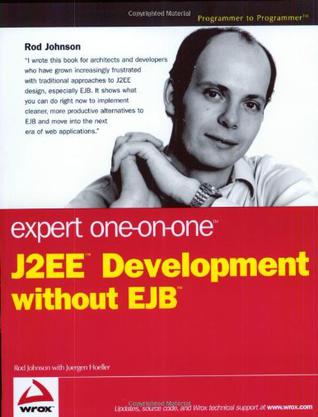
Expert One-on-One J2EE Development without EJB
What is this book about? "Expert One-on-One J2EE Development without EJB" shows Java developers and architects how to build robust J2EE applications without having to use Enterprise JavaBeans (EJB). This practical, code-intensive guide provides best practices for using simpler and more effective methods and tools, including JavaServer pages, servlets, and lightweight frameworks. What does this book cover? The book begins by examining the limits of EJB technology - what it does well and not so well.Then the authors guide you through alternatives to EJB that you can use to create higher quality applications faster and at lower cost - both agile methods as well as new classes of tools that have evolved over the past few years. They then dive into the details, showing solutions based on the lightweight framework they pioneered on SourceForge - one of the most innovative open source communities. They demonstrate how to leverage practical techniques and tools, including the popular open source Spring Framework and Hibernate.This book also guides you through productive solutions to core problems, such as transaction management, persistence, remoting, and Web tier design. You will examine how these alternatives affect testing, performance, and scalability, and discover how lightweight architectures can slash time and effort on many projects. What will you learn from this book? Here are some details on what you'll find in this book such as: how to find the simplest and most maintainable architecture for your application; effective transaction management without EJB; how to solve common problems in enterprise software development using AOP and Inversion of Control; Web tier design and the place of the Web tier in a well-designed J2EE application; effective data access techniques for J2EE applications with JDBC, Hibernate, and JDO; how to leverage open source products to improve productivity and reduce custom coding; and, how to design for optimal performance and scalability.